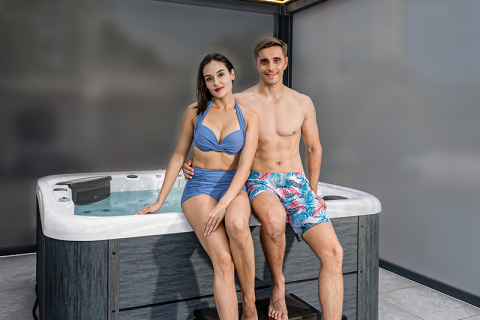
- Home
- >
News
General Power Recommendations For typical 2-person outdoor spa hot tubs, the water capacity typically ranges from 300 to 600 liters. Within this capacity range, a heater power of 3 kW to 6 kW is generally recommended.
It's generally recommended that water not be left in a whirlpool or spa for extended periods. For most households, if the whirlpool or spa is not used for extended periods (for example, during the winter or during summer), it's recommended that the water be replaced every two to four weeks.
Advantages of a whirlpool spa hot tub: 1. Deep relaxation and stress relief 2. Integrated multi-functional design 3. Enhances quality of life and the quality of your home environment 4. Assists with health maintenance and rehabilitation 5. Diverse configurations to accommodate diverse needs Disadvantages of Whirlpool Spa Hot Tubs: 1. Expensive, High Barrier to Entry 2. Requires intensive installation and space constraints 3. High energy consumption, significant operating costs 4. Requires tedious cleaning and maintenance 5. Noise issues
When using an outdoor whirlpool hot tub, your body temperature is affected by the water temperature, dilating your skin's pores and accelerating blood circulation. If you don't rinse off immediately after leaving the tub, your body's temperature regulation system may be affected.
If the tub is designed for two people, the tub's size and massage jet distribution should be tailored to suit both. Too many jets can waste space, while too few can result in a poor massage effect. For a single-person tub, a smaller number of jets is usually sufficient, focusing on key areas of the body (such as the back, shoulders, and legs).
If the water in an outdoor whirlpool hot tub has a sour, musty, or rancid odor, it is often a sign of bacterial growth. When bacteria break down organic matter in the water, they release odorous chemicals, especially if the water is not cleaned and replaced promptly.
Recommended standards for high-end outdoor spa hot tub jets are as follows: · Each massage station is recommended to have 6-10 high-quality, functional jets; · A four-person tub recommends 30-50 total jets, a six-person tub recommends 40-70, and a tub with eight or more people recommends at least 70 jets.
Generally speaking, the dimensions of most 4-person whirlpool spa hot tubs on the market range from the following: · Length (long side): 180cm to 230cm · Width (short side): 160cm to 210cm · Height (depth): 75cm to 100cm
The combination of hot water and whirlpool massage in outdoor whirlpool hot tubs makes them uniquely effective in treating injuries, especially those related to muscles and joints. The effectiveness of outdoor whirlpool hot tubs varies depending on the injury.
Before purchasing, it's crucial to clearly define your needs for an outdoor whirlpool hot tub. For example, are you looking for pure relaxation or relief for a physical ailment? Do you plan to use it year-round, or only on special occasions? Only after clarifying your needs can you choose the right product.
For example, if a standard outdoor whirlpool hot tub has 10 jets, the pump power might be 1 kilowatt; if the number is increased to 20, the pump power requirement might increase to 1.5 kilowatts or more. This means that as the number of jets increases, the pump consumes more electricity to maintain normal operation.
Unsuitable Locations for Outdoor Spa Hot Tubs 1. Unreinforced natural soil 2. Unenclosed or open areas with exposed drafts 3. Directly under dripping eaves or snow 4. Areas near gas utilities, cables, or high-voltage equipment 5. Low-lying areas without a good drainage system












